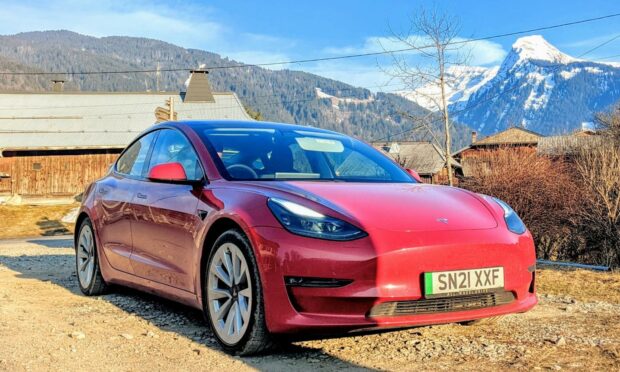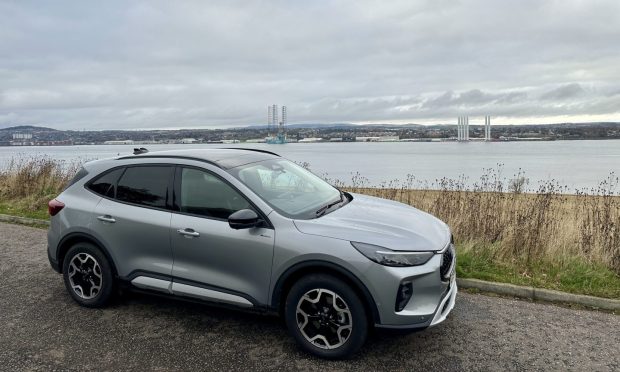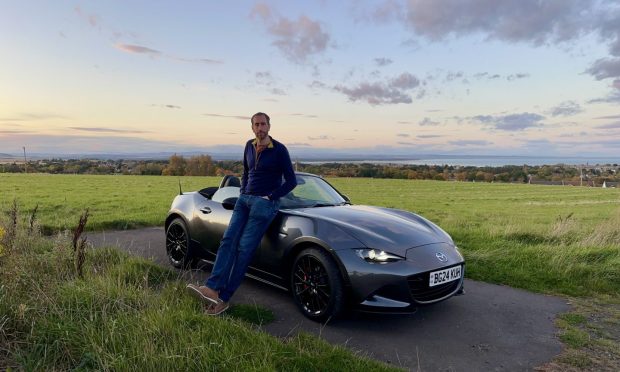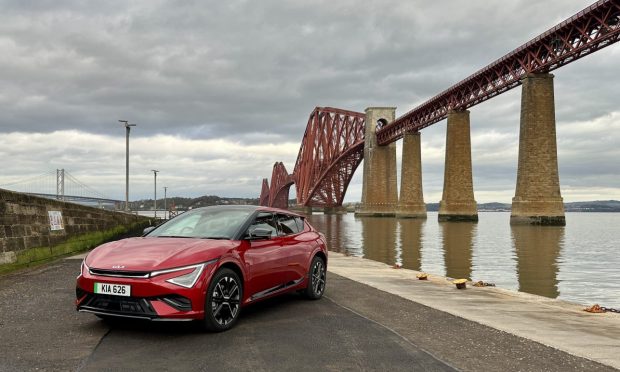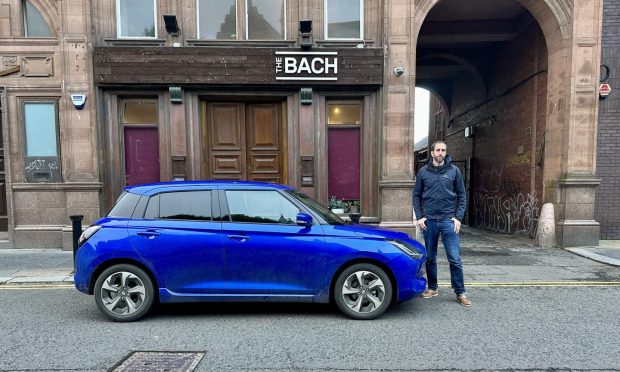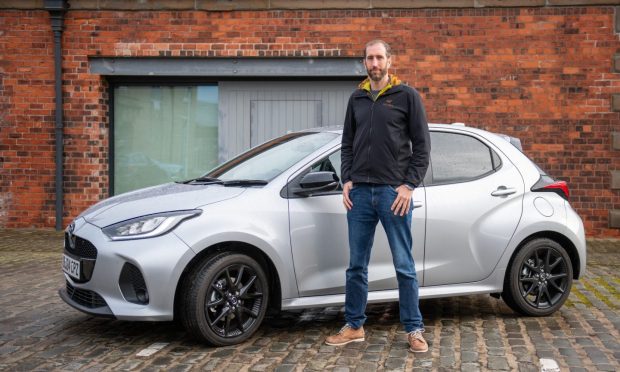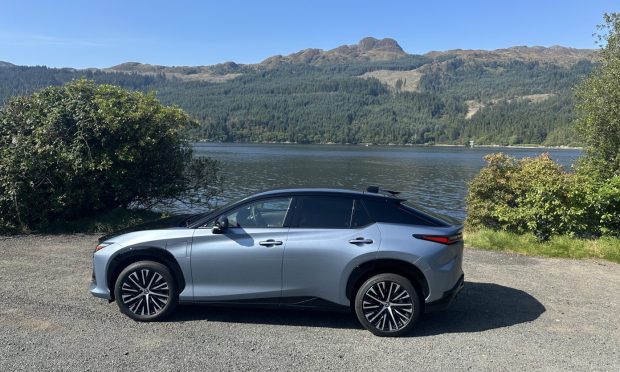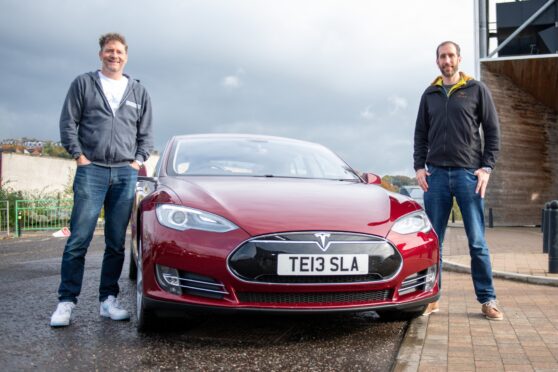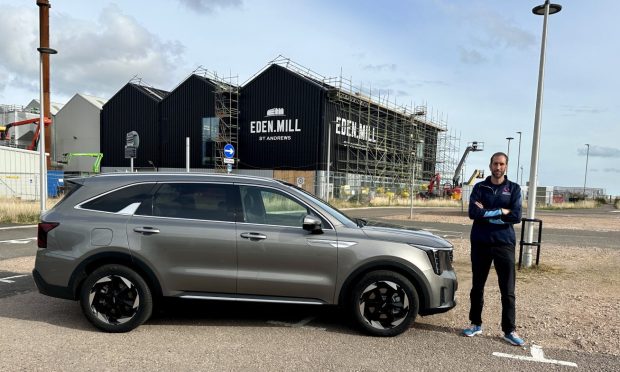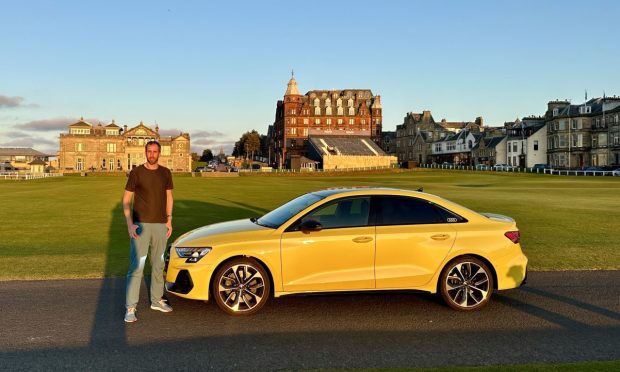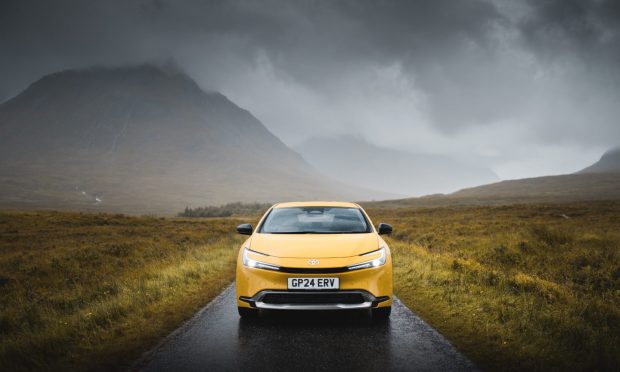Electric cars sound great but can you really cover long distances in them? To find out I borrowed a Tesla Model 3 and took it on the ultimate journey from Scotland to the French Alps.
We drove from Dundee to Morzine and back – an expedition of more than 2,000 miles.
It’s the sort of journey you could easily make in a diesel car. But how would we do on battery power?
Our Tesla Model 3 was the long range dual motor model. On a full battery it’s good for 360 miles, according to official figures. With electric motors front and rear it also had four-wheel drive – perfect for heading into the Alps.
The Model 3 is the smallest car Tesla makes, sitting below the Model S luxury saloon and the Model X and Model Y, which are SUVs.
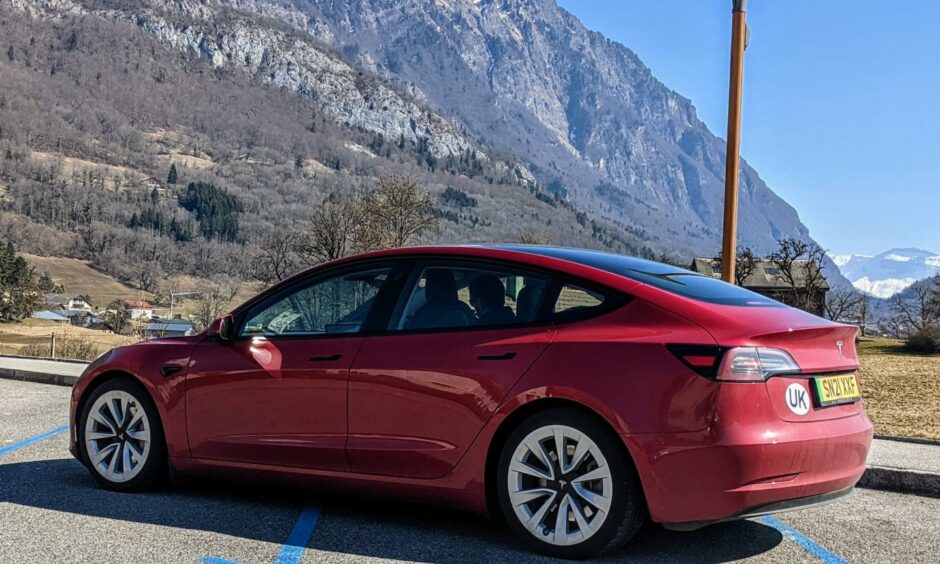
Roughly the same size as a BMW 3 Series or Audi A4, it has plenty of room for four adults, a good size boot, and additional storage space under the bonnet where an internal combustion engine would normally sit. This front boot is nicknamed the ‘froot’ (or ‘frunk’, if you’re in America).
Tesla Model 3 prices start at £42,990 and the version I drove cost £47,500 excluding options.
Heading to the Alps
We set off from Scotland late afternoon on a dreary Wednesday. Planning our journey couldn’t be easier. We put Morzine into Tesla’s sat nav. It not only gave us our route; it told us where to charge, how much battery we would have when we got to the charge point, and how long we needed to plug in before continuing our journey. You can even see how many of the charging stations are in use.
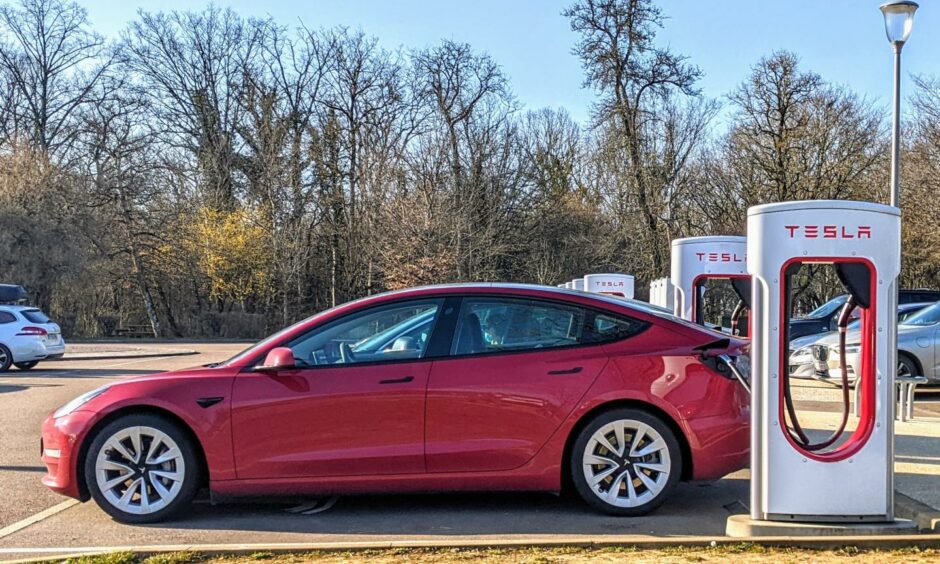
We stopped overnight at Scotch Corner before carrying on to Folkestone and getting the Channel Tunnel, staying at a hotel in Calais. Then we took France’s fantastic toll roads to the lovely old town of Bourg-en-Bress before completing the journey to Morzine on Saturday morning.
The entire outward journey took six charging stops, usually for 20-30 minutes at a time.
This is possible because Tesla has its own network of charging infrastructure, called Superchargers. All other electric cars use the public charge network (which Teslas can also use). Almost all of these charge at a rate of 50kW or less.
Tesla Superchargers charge at between 120kW and as high as 185kW. This means you’re juiced up and ready to carry on with your journey in 20 minutes instead of an hour. Perfect.
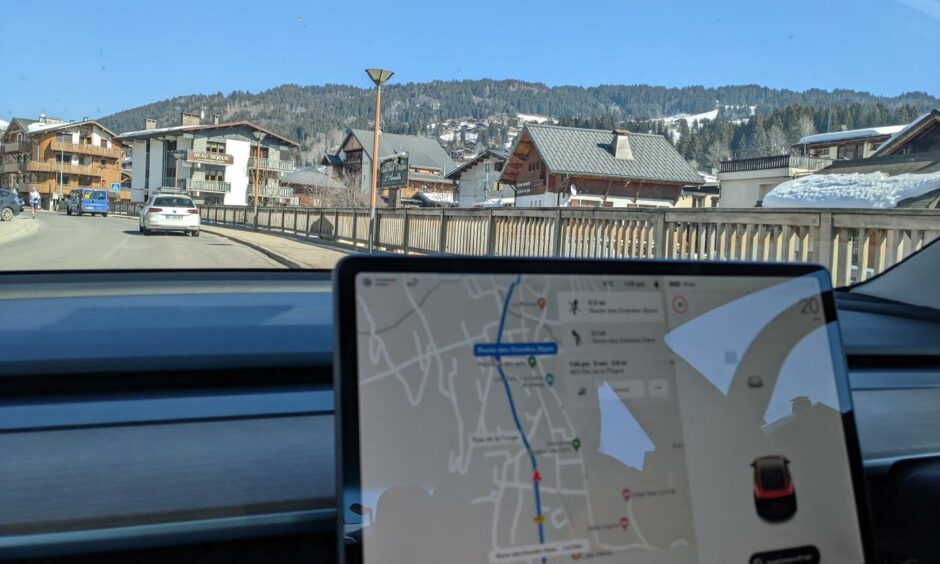
Tesla’s cruise control system is excellent. It can detect what the speed limit is and drive at exactly that speed, slowing down when it approaches traffic or roundabouts.
Our car also came with autopilot, which can steer and even carry out overtaking manoeuvres – you simply indicate to change lanes and the car pulls out and overtakes all by itself. It isn’t fully autonomous yet – you still need to keep your hands on the wheels – but having the car steer itself is useful if you want to quickly reach for a snack or a coffee.
Almost everything is controlled from a single central touchscreen. It’s easy to use and responsive, and you can control most systems with voice commands as well.
Fast and fun
The Tesla Model 3 is incredibly fast. It’ll get from 0-62mph in 4.2 seconds – and there’s a Performance version that cuts that to 3.1 seconds.
It’s also smooth and refined. The seats are comfortable and the standard panoramic glass roof makes the car feel light and airy, as well as letting you see more of the Alpine scenery.
The Model 3 is a saloon so the boot aperture isn’t huge but there’s plenty of space in there. We easily fitted two sets of skis and boots, two suitcases, two holdalls and bags of food and wine with two of the rear seats folded. The ‘froot’ was great for beer as well.
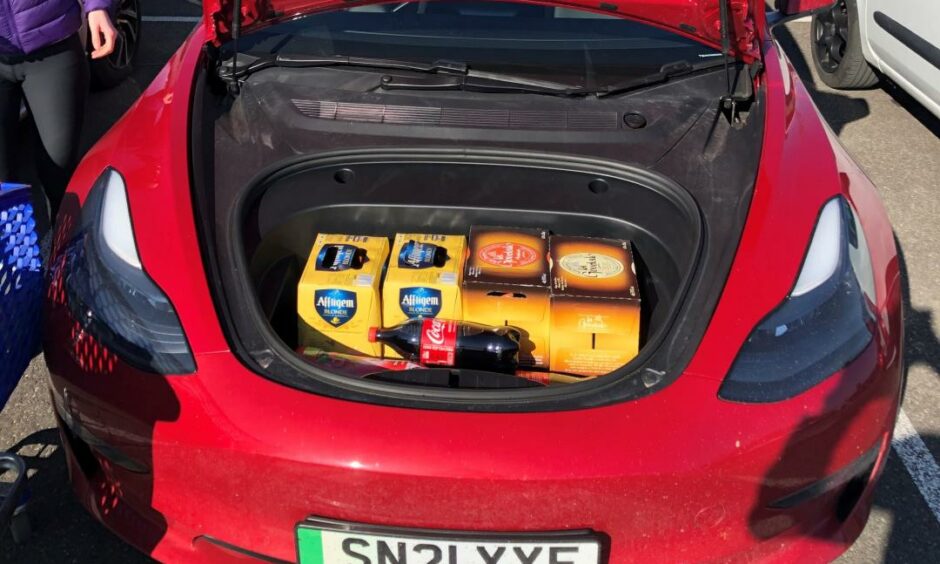
The roads were clear of snow but the Tesla easily handled the twists and turns that took us up into the mountains. It was also a great steed for getting us to the lifts in the morning and doing supermarket runs.
We decided to do the return journey in one gargantuan 1,000 mile, 24 hour trip, sleeping in shifts. The Tesla could not have been better, cruising beautifully mile after mile.
You tend not to use the 360 mile range all in one go. Instead you’ll do 200-250 miles then charge for 20-30 minutes. This means you’re stopping every three or four hours, which is perfect for snack and toilet breaks.
I really did fall for the Tesla Model 3 over our 10 days with the car. Its excellent range, terrific performance, clever features and ease of use really won me over.
Facts
Price: £47,500
0-62mph: 4.2 seconds
Top speed: 145mph
Range: 360 miles
CO2 emissions: 0g/km
